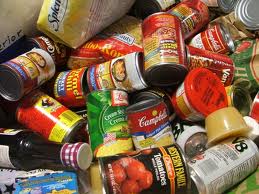food banks and systems change
 The Hunger Game
The Hunger Game
Food banks may compound the very problems they should be solving
By Nick Saul
Picture a vast warehouse the size of a football field. Forklifts stand loaded with wooden pallets and cardboard boxes tightly secured with heavy-duty plastic wrap. In aisle upon aisle, boxes sit on metal shelves that reach all the way to the ceiling. It might be an IKEA store or any modern commodity warehouse. But this is a food bank or, more accurately, a food bank distribution warehouse. Every major Canadian city has one. The largest send out nearly 8 million kilograms of food a year to the hungry people lining up at community-based food banks.
The scale and sophistication of these operations are impressive. There are hundreds of employees and volunteers who handle thousands of donated food items, trucks and boxes, cans and bags. There is also a large fridge and freezer section for storing all manner of perishables.
Yet each time I visit such warehouses, I find myself alternating between hope and despair. Hope born of the understanding that all of this is motivated by the human urge to help others with that most basic of needs: food. Despair because this effort, and that of food banks all over Canada, has not solved the problem of hunger. On the contrary, I believe food banking makes it worse.
Read the rest of the article here.

